Long Bien Market can be found in the Ba Dinh and Hoan Kiem areas of Hanoi. It gets its name from its proximity to the Long Bien Bridge, located conveniently off Tran Nhat Duat Street. The market mainly showcases sellers from nearby provinces like Bac Giang, Bac Ninh, Ha Nam, and Phu Tho, along with vendors from various suburban districts of Hanoi, including Gia Lam, Thanh Tri, Dong Anh, My Duc, and Chuong My.
History and Significance

Early Origins and Development
The roots of Long Bien Market in Hanoi can be traced back to the late 19th century, during the French colonial period. The market is strategically located near the Long Bien Bridge, an iconic structure that was constructed between 1899 and 1902 under French rule. The bridge served as a crucial transportation link, facilitating the flow of goods and people, and subsequently, the market emerged to meet the commercial demands created by this new infrastructure.
Hanoi, often referred to as the “city surrounded by rivers,” has a long history of being a vital commercial hub, thanks to its proximity to the Red River. The construction of Long Bien Bridge further amplified this importance, establishing Long Bien Market as a key node in Hanoi’s supply chain. Initially, the market served both local Vietnamese and French colonial residents, reflecting the cultural amalgamation of the period. However, despite the colonial influence, the market retained its predominantly Vietnamese character, thriving as a bustling hub for local trade.
Over the decades, Long Bien Market has evolved alongside Hanoi, adapting to the city’s growing population and changing economic landscape. The market’s strategic location near the Red River allowed it to flourish, connecting rural agricultural areas with the urban center of Hanoi. The exchange of goods at Long Bien Market was not merely transactional but also deeply ingrained in the daily lives and traditions of the local communities. This continual interaction between urban and rural economies has been a driving force behind the market’s enduring significance.
Role in Hanoi’s Economy and Trade
Long Bien Market’s significance in Hanoi’s economy cannot be overstated. As one of the largest and busiest fruit and produce markets in the city, it plays a crucial role in the distribution of fresh agricultural products. Its proximity to Long Bien Bridge ensures a steady influx of goods from rural areas, making it an essential component of Hanoi’s food supply chain.
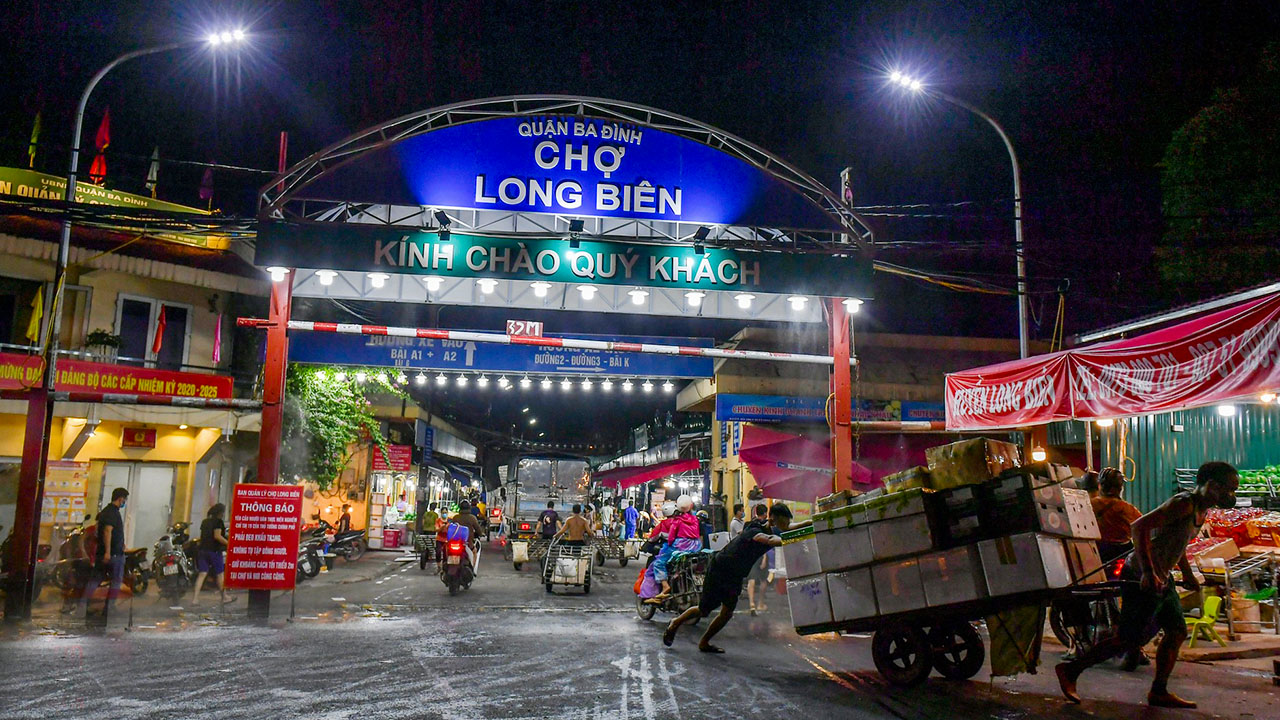
This market is a vital link between Hanoi and its surrounding rural areas, where much of the produce originates. Vendors, farmers, and traders from provinces like Bac Giang, Bac Ninh, and Ha Nam, as well as suburban districts like Gia Lam and My Duc, flock to Long Bien Market to sell their goods. This dynamic interaction fosters a symbiotic relationship where urban demand fuels rural production, and rural supply sustains urban consumption.
The English language gained some influence in Vietnam during the French colonial era, mainly due to the French efforts to expand their colonial reach and economic ties. Nonetheless, the market has remained predominantly Vietnamese in character, with local vendors continuing their traditional trading practices. The influence of colonial powers is visible in the architecture of Long Bien Bridge, but the market itself is a testament to the resilience and adaptability of Vietnamese culture and entrepreneurship.
Importance to Local Communities
Long Bien Market is more than just a place for buying and selling goods; it is a cornerstone of community life in Hanoi. For many locals, the market symbolizes resilience, tradition, and the entrepreneurial spirit that defines the city. It provides livelihoods for countless families, fosters social interactions, and plays a crucial role in the daily lives of Hanoi’s residents.
The market’s vibrant atmosphere attracts not only buyers and sellers but also tourists who seek an authentic experience of Hanoi’s cultural and economic fabric. It serves as a communal space where people gather, exchange news, and celebrate local customs and traditions. Moreover, the market’s diverse culinary offerings and fresh produce make it an indispensable part of Hanoi’s food culture.
Market Structure and Layout
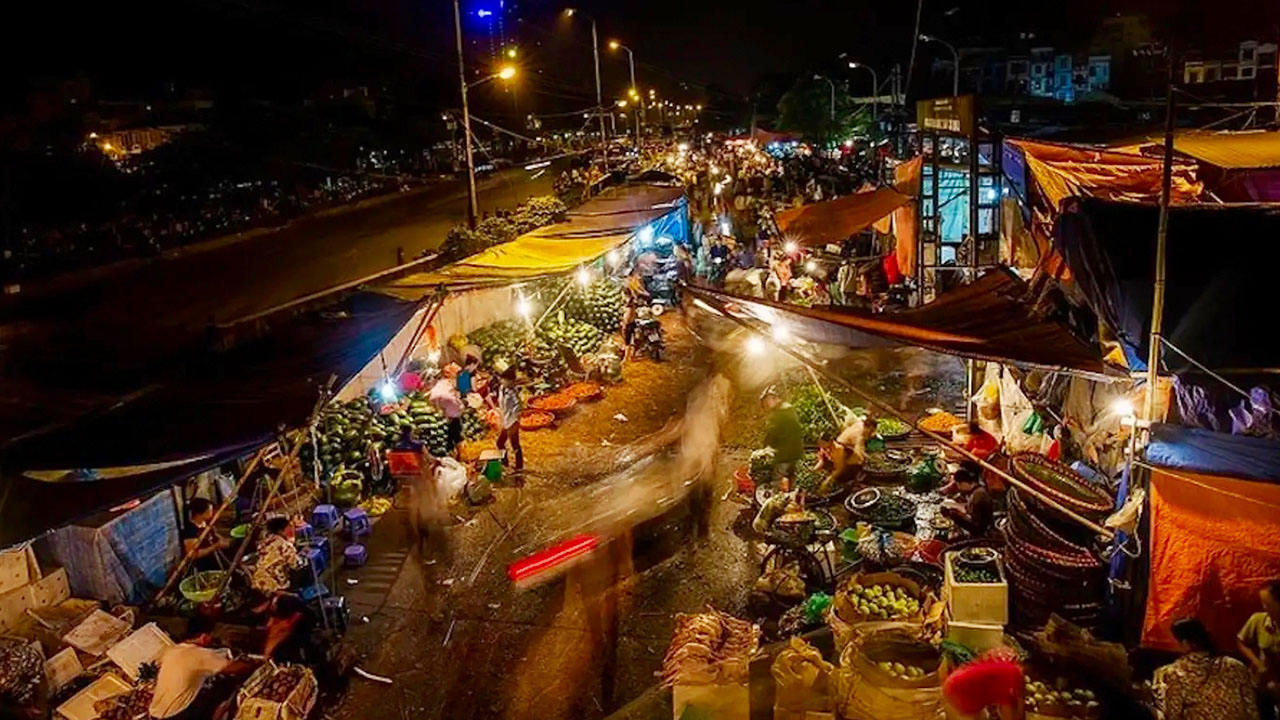
Main Sections and Areas
Long Bien Market is a sprawling expanse of commerce and culture, structured in a way that maximizes efficiency and accessibility. The market is organized into distinct sections, each dedicated to different types of goods, making it easier for buyers to navigate and find what they are looking for.
The main sections of the market include:
- Fresh Produce Zone: This area is brimming with seasonal fruits and vegetables, sourced from various regions across Vietnam. From tropical fruits like mangoes and lychees in the summer to winter staples like oranges and pomegranates, the diversity is astounding.
- Seafood Section: Fresh fish, shrimp, crabs, and other seafood are a major attraction here. Vendors bring their catches from nearby coastal areas, ensuring the freshness and quality of the products.
- Meat and Poultry Zone: This section offers a wide variety of meats, from chicken and pork to more exotic options like duck and quail. The hustle and bustle here, especially during the early morning hours, is a sight to behold.
- Dry Goods and Sundries: Spices, dried fruits, nuts, and other non-perishable items are found in this part of the market. It’s a treasure trove for anyone looking to stock up on essential pantry items.
- Street Food Stalls: Interspersed throughout the market are numerous food stalls offering traditional Vietnamese dishes like Pho, Banh Mi, and Bun Cha. These stalls provide a quick and delicious option for shoppers to grab a bite while they shop.
Key Commodities and Products
The diversity of goods at Long Bien Market is one of its defining characteristics. The market is renowned for its wide array of fresh produce, which attracts buyers from near and far.
Here is a list of key commodities and products available at the market:
- Fruits: Mangoes, watermelons, plums, guavas, jackfruits, avocados, lychees, longans, oranges, pomegranates, and bananas.
- Vegetables: A variety of seasonal vegetables, from leafy greens to root vegetables and peas.
- Seafood: Fresh fish, shrimp, crabs, and other seafood.
- Meat and Poultry: Chicken, pork, beef, duck, quail, and other meats.
- Dry Goods: Spices, dried fruits, nuts, rice, and grains.
- Prepared Foods: Gio cakes, chicken noodle soup, crab paste vermicelli soup, among other local delicacies.
Architectural Features and Design
The architecture of Long Bien Market is as eclectic and vibrant as the market itself. Located under the historic Long Bien Bridge, the market takes full advantage of the open space and infrastructure provided by the bridge.
- Open-Air Design: The market is designed with an open-air layout, allowing for natural ventilation and easy movement of goods and people.
- Stall Arrangement: Stalls are arranged in a grid-like pattern, making it easier for visitors to navigate through the different sections. This organization is not rigid and evolves based on the availability of space and the flow of customers.
- Temporary Structures: Many of the market stalls are temporary structures, set up with tarps and metal frames. This flexibility allows vendors to adapt quickly to changes in weather and market conditions.
- Utilization of Bridge Space: The market extends under the arches of Long Bien Bridge, using the bridge’s structure for support and shelter. This unique integration of market and bridge creates a visually striking environment.
- Lighting and Safety: Given that the market operates primarily at night, adequate lighting and safety measures are essential. Vendors use a combination of electric lights and traditional oil lamps to illuminate their stalls, creating a warm and inviting atmosphere.
In summary, the structure and layout of Long Bien Market are designed to maximize efficiency and accessibility while maintaining its vibrant and chaotic charm. The open-air design and strategic use of space under Long Bien Bridge add to its unique character, making it a bustling and captivating place for both locals and visitors.
Daily Operations and Activities
Busy Hours and Peak Seasons
Long Bien Market is renowned for its frenetic energy and the constant buzz of activity. The market operates 24 hours a day, but it truly comes alive during the late-night hours. From around 10 PM to 4 AM, the market is a hive of activity as vendors set up their stalls and prepare for the influx of buyers.
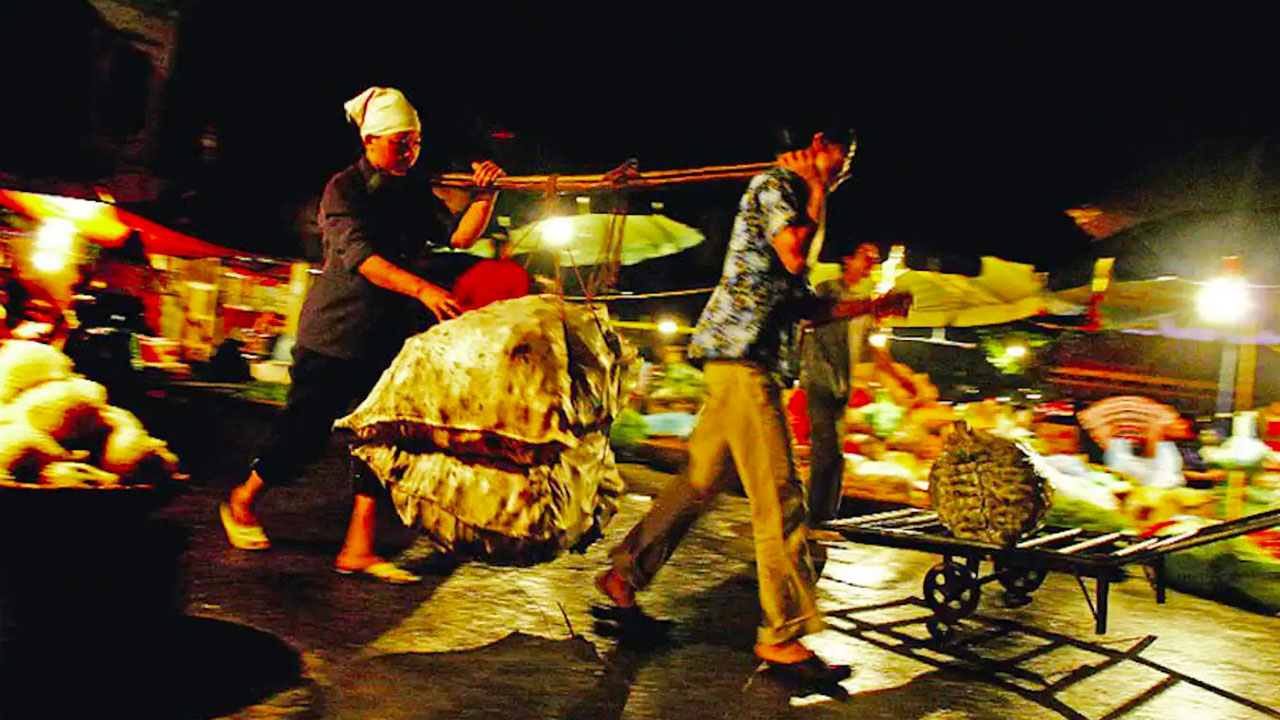
Busy Hours: The peak hours are generally between 2 AM and 5 AM. During this time, the market is at its most vibrant, with vendors from various regions bringing in their fresh produce and other goods. The early morning hours see a flurry of activity as buyers mainly small vendors, street food stall operators, and local shop owners scour the market for the best deals.
Peak Seasons: The market’s activity levels also fluctuate based on seasonal availability of produce. For instance, summer months see an abundance of tropical fruits like mangoes, lychees, and watermelons, while winter brings in a flood of oranges, pomegranates, and bananas. Each season brings its unique set of flavors and colors, adding to the market’s dynamic nature.
Vendors, Merchants, and Traders
Long Bien Market is a melting pot of traders from various backgrounds, each bringing their unique goods and bargaining styles. The market is a hub for vendors from surrounding provinces like Bac Giang, Bac Ninh, Ha Nam, and Phu Tho, as well as suburban districts of Hanoi like Gia Lam and My Duc.
Types of Vendors:
- Wholesale Vendors: These vendors typically bring large quantities of produce and other goods directly from farms or production units. Their stalls are often the first point of contact for smaller traders looking to buy in bulk.
- Retail Vendors: These are small vendors who set up stalls to sell goods directly to consumers. They often purchase from wholesale vendors and sell in smaller quantities.
- Street Food Vendors: Interspersed throughout the market are numerous street food stalls, offering a quick bite for shoppers and traders alike. These vendors add a delightful culinary dimension to the market experience.
Bargaining and Pricing:
The art of bargaining is an integral part of the market experience. Vendors are skilled negotiators, and buyers are encouraged to haggle to get the best prices. This back-and-forth is not only a commercial transaction but also a social interaction, reflecting the market’s vibrant culture.
Interaction Between Buyers and Sellers
The interactions between buyers and sellers at Long Bien Market are both transactional and social. The market is a lively theater of negotiations, where prices are not fixed, and haggling is expected. This dynamic creates an engaging atmosphere, where both parties are active participants in the buying process.
Bargaining Techniques:
- Initial Offers: Vendors often start with higher prices, expecting buyers to negotiate.
- Counteroffers: Buyers counter with lower prices, leading to a series of back-and-forth offers.
- Final Agreement: Through this process, a mutually agreeable price is eventually reached. The negotiations are often accompanied by friendly banter and good-natured haggling, adding to the market’s lively ambiance.
Role of Relationship:
Over time, regular buyers and sellers develop relationships based on trust and mutual benefit. These relationships often lead to better deals and preferred access to the best goods. The market thus fosters a sense of community and continuity, with long-term relationships playing a key role in its daily operations.
In summary, the daily operations and activities at Long Bien Market are a testament to its vibrant culture and economic significance. The market’s bustling energy during peak hours, the diverse array of vendors, and the dynamic interactions between buyers and sellers all contribute to its unique and captivating atmosphere.
Cultural Significance and Local Customs
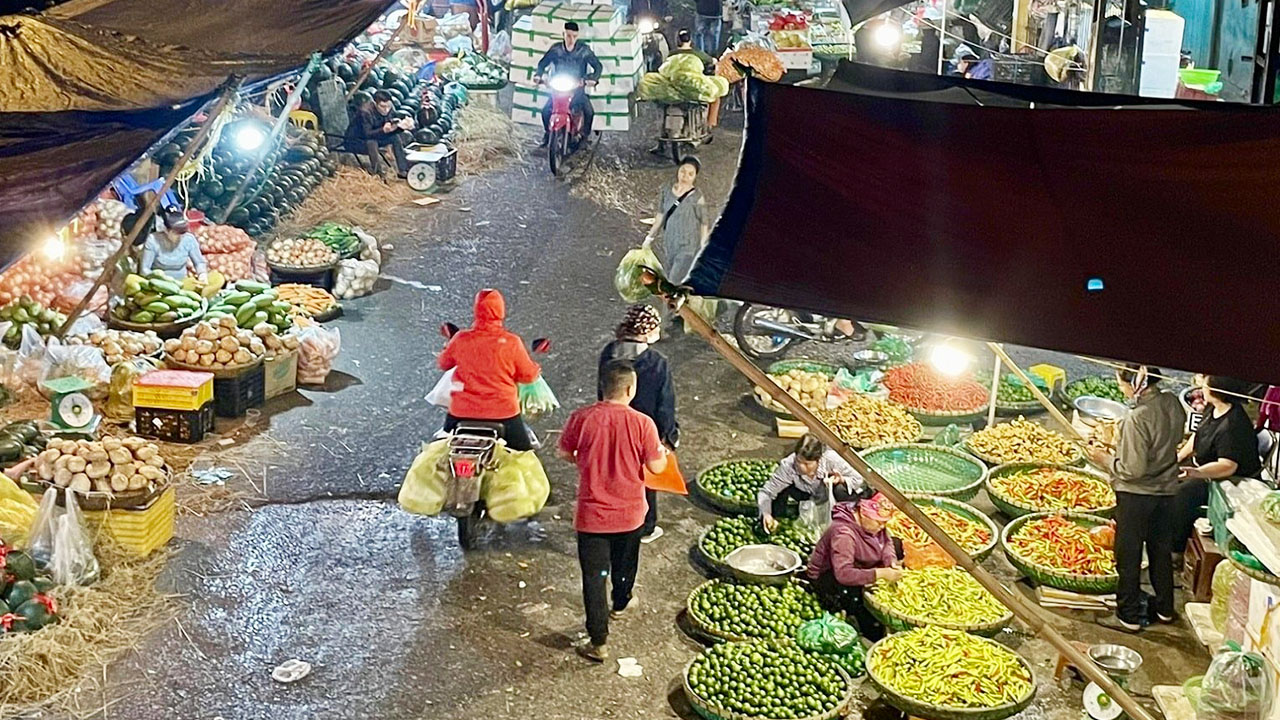
Traditional Practices and Rituals
Long Bien Market is not just a commercial hub; it is a repository of traditional practices and rituals that reflect the rich cultural heritage of Hanoi and Vietnam. These practices are deeply ingrained in the daily activities of the market and add a layer of cultural depth to its bustling atmosphere.
Bargaining as a Tradition: The art of bargaining is more than just a way to haggle prices; it is a time-honored tradition that showcases the ingenuity and resourcefulness of the Vietnamese people. This practice is passed down through generations and remains a vital part of the market experience.
Feasts and Celebrations: During significant Vietnamese holidays and festivals like Tet (Lunar New Year) and the Mid-Autumn Festival, the market undergoes a vibrant transformation. Stalls are adorned with festive decorations, and vendors offer special holiday treats and gifts. These celebrations are not only a time for business but also for community bonding and cultural expression.
Altitude Offerings: Many vendors and traders begin their day with small offerings to local deities and ancestors. These offerings, typically consisting of fruits, incense, and flowers, are made to seek blessings for a prosperous day of trade. This ritual underscores the deep spiritual connection that the Vietnamese have with their cultural practices.
Social and Community Interactions
Long Bien Market is also a vital social hub where people from various walks of life come together. The market serves as a communal space where individuals can engage in social interactions, build relationships, and strengthen community bonds.
Social Gatherings: The market is a popular meeting point for friends and family. People often gather at market stalls or street food vendors to catch up on news, share stories, and enjoy a meal together. These gatherings enhance the sense of community and contribute to the market’s lively atmosphere.
Support Networks: For many vendors, the market also functions as a support network. Vendors often help each other out in times of need, offering financial assistance, sharing resources, or providing emotional support. This sense of mutual aid reflects the strong community spirit that pervades the market.
Role in Local Food and Cuisine
Long Bien Market plays a crucial role in Hanoi’s culinary landscape. It acts as a primary source of fresh ingredients for numerous local dishes, making it an indispensable part of Hanoi’s food culture.
Fresh Produce: The market’s extensive selection of fruits, vegetables, and herbs is vital for preparing traditional Vietnamese dishes. From the fresh herbs used in pho to the tropical fruits that are a staple of Vietnamese desserts, the market provides the essential ingredients that define Hanoi’s cuisine.
Street Food: The market is also home to numerous street food vendors who offer a wide array of local specialties. Dishes like banh mi, bun cha, and pho are readily available, allowing visitors to experience the authentic flavors of Hanoi. These street food stalls not only cater to the daily needs of local residents but also attract tourists eager to explore Vietnamese cuisine.
Culinary Traditions: The market is a living testament to Hanoi’s culinary traditions. Vendors often share recipes, cooking tips, and culinary advice with customers, preserving and passing down the rich culinary heritage of the city.
In summary, Long Bien Market is a cultural treasure trove, reflecting the traditional practices, social interactions, and culinary richness of Hanoi. It serves as a vibrant community space where cultural traditions are preserved and celebrated, making it an integral part of Hanoi’s cultural identity.
Long Bien Market: A Symbol of Hanoi
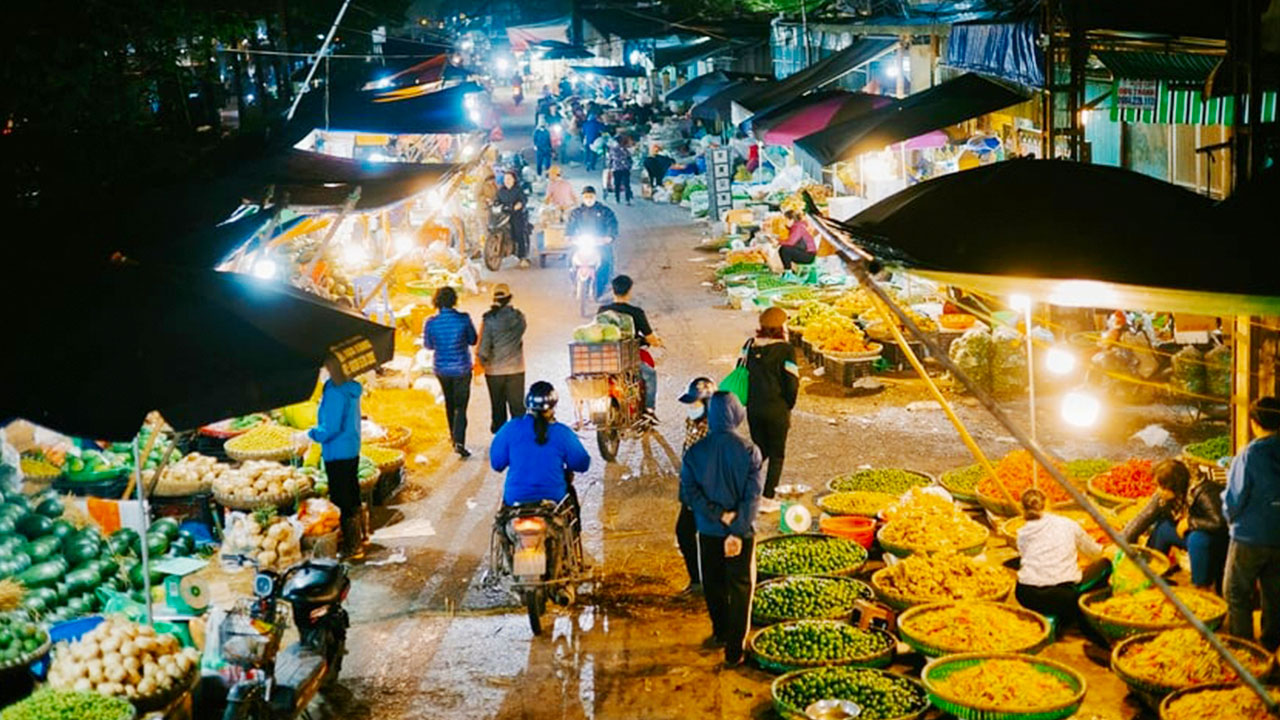
A Reflection of City Life and Culture
Long Bien Market stands as a vibrant reflection of Hanoi’s rich cultural tapestry. As one walks through the bustling lanes of the market, it’s impossible not to be captivated by the lively interactions, the colorful displays of fresh produce, and the aromatic scents wafting from food stalls. The market encapsulates the daily rhythms of Hanoi, offering a microcosm of the city’s life and culture.
Cultural Mosaic: The market showcases the diverse cultural influences that have shaped Hanoi over the centuries. From traditional Vietnamese goods to contemporary items, the market is a melting pot of old and new, local and global. This blend of cultures is evident in the products sold, the languages spoken, and the customs practiced within the market.
Community Hub: Long Bien Market is more than just a place for commerce; it is a communal space where people come together to share their stories, celebrate traditions, and build relationships. The market serves as a social hub where the community’s heartbeats can be felt, reflecting the collective spirit and resilience of Hanoi’s residents.
A Source of Inspiration for Artists and Writers
Long Bien Market, with its dynamic and chaotic charm, has long been a muse for artists and writers. The market’s vibrant energy, coupled with its historical significance, offers a wealth of inspirationfor creative minds.
Visual Arts: The market’s bustling scenes, vivid colors, and eclectic mix of goods have been captured in countless paintings, photographs, and sketches. Prominent Vietnamese painter Bui Xuan Phai, known for his depictions of Hanoi’s streets, often included scenes from Long Bien Market in his works. His paintings, rich with emotion and cultural detail, bring to life the essence of the market, showcasing its role as a living, breathing entity within the city.
Literature: Long Bien Market is also a recurring theme in Vietnamese literature. Authors often use the market as a backdrop to explore broader social and cultural issues. In many stories and poems, the market represents the struggles and triumphs of everyday life in Hanoi. The market’s vibrancy and resilience serve as metaphors for the endurance and adaptability of the city’s residents.
Photography: For photographers, Long Bien Market offers an endless array of compelling subjects. From the vibrant displays of fruits and vegetables to the candid interactions between buyers and sellers, the market’s dynamic environment provides countless opportunities to capture the spirit of Hanoi. Many photo essays and exhibitions have focused on Long Bien Market, portraying it as a symbol of the city’s enduring vitality.
A Place of Memories and Experiences
For locals and visitors alike, Long Bien Market is a place where memories are made and experiences are cherished. The market’s enduring charm and cultural significance make it a beloved destination for people from all walks of life.
Local Memories: For Hanoians, Long Bien Market is deeply intertwined with their personal and collective histories. Many locals have grown up visiting the market, accompanying their parents or grandparents on early morning shopping trips. These experiences become cherished memories, passed down through generations. The market is a place where the past and present converge, creating a sense of continuity and connection.
Visitor Experiences: For visitors, a trip to Long Bien Market offers an authentic glimpse into Hanoi’s cultural and economic life. Walking through the market’s bustling lanes, savoring local delicacies, and engaging in the time-honored tradition of bargaining provide a rich and immersive experience. The market’s unique atmosphere allows visitors to connect with the local culture in a meaningful and memorable way.
A Symbol of Resilience and Adaptability
Long Bien Market is a testament to Hanoi’s resilience and adaptability. Despite the challenges brought by modernization, urban development, and globalization, the market has retained its cultural essence and continues to thrive as a central part of the city’s life.
Historical Resilience: The market has weathered numerous changes and upheavals over the decades, from the colonial period to the post-war era and the onset of rapid modernization. Throughout these changes, Long Bien Market has remained a steadfast presence, adapting to new circumstances while preserving its core identity.
Future Adaptations: As Hanoi continues to evolve, Long Bien Market faces ongoing challenges that require innovative solutions. Efforts to modernize the market while maintaining its traditional character are essential to its continued success. By embracing sustainable practices, improving infrastructure, and fostering community involvement, the market can navigate the complexities of modern life while preserving its cultural heritage.
In conclusion, Long Bien Market is more than just a place for commerce; it is a symbol of Hanoi’s cultural richness, resilience, and adaptability. As a reflection of the city’s life and culture, a source of inspiration for artists and writers, and a place of cherished memories and experiences, the market holds a special place in the hearts of locals and visitors alike. Its enduring significance ensures that Long Bien Market will continue to be a vibrant and integral part of Hanoi’s landscape for generations to come.
Modernization and Challenges
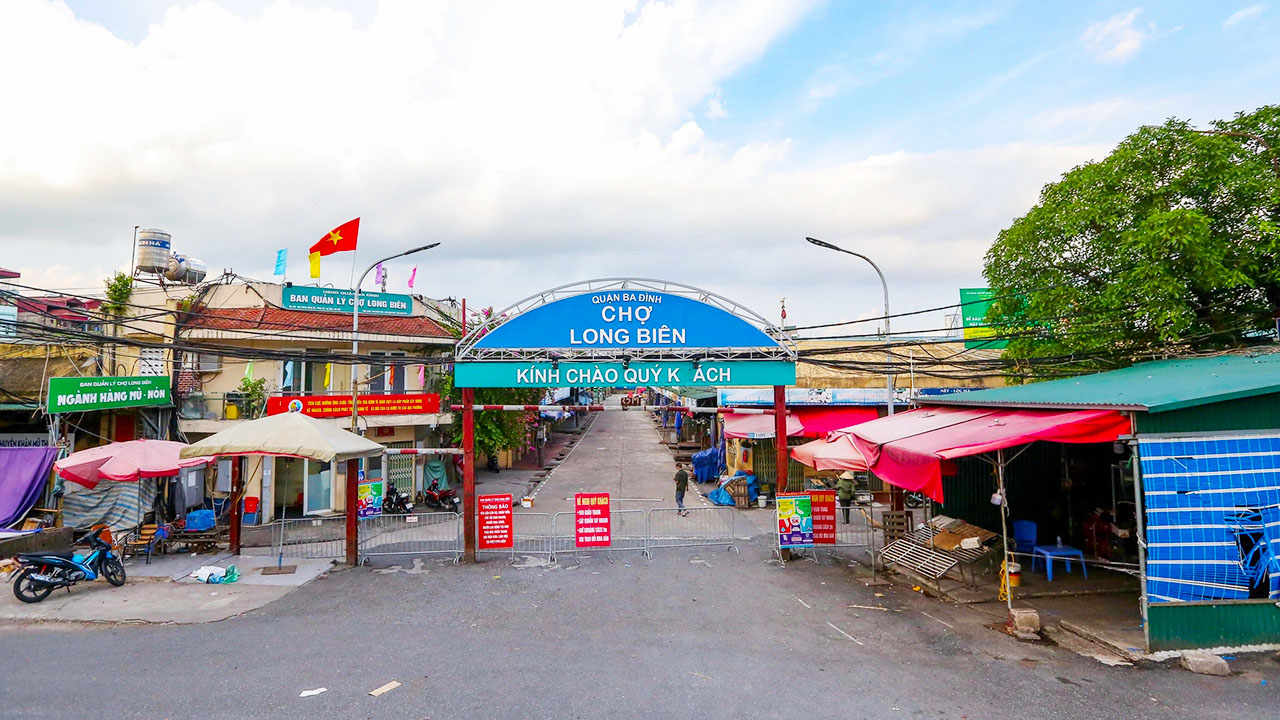
Infrastructure Improvements and Expansion
The modernization of Long Bien Market has been an ongoing process aimed at improving its infrastructure and expanding its capacity to meet the growing demands of both vendors and buyers. These efforts are crucial in ensuring that the market remains a vibrant and efficient hub of commerce in Hanoi.
Lighting and Safety: To accommodate its late-night operations, significant improvements have been made to the market’s lighting and safety infrastructure. Modern lighting systems have been installed to ensure visibility and security during peak hours. Additionally, safety measures such as better-organized traffic flow and designated parking areas have been implemented to minimize congestion and accidents.
Sanitation Improvements: Sanitation has been a major focus of the modernization efforts. The market now has improved waste disposal systems, regular cleaning schedules, and better-organized waste management protocols. These measures help maintain a cleaner and more hygienic environment, benefiting both vendors and customers.
Expansion Plans: Plans to expand the market include adding more stalls, storage facilities, and loading/unloading areas. This expansion aims to reduce overcrowding and improve the overall shopping experience. The additional space will also allow for a greater variety of goods, attracting more buyers and fostering increased competition among vendors.
Impact of Tourism and Globalization
Tourism and globalization have had a profound impact on Long Bien Market, bringing both opportunities and challenges. As Hanoi becomes an increasingly popular tourist destination, the market has adapted to cater to a more diverse range of visitors.
Increased Revenue: The influx of tourists has boosted sales for many vendors, providing them with new opportunities to showcase and sell their goods. Tourists are often eager to experience the local culture, and their purchases contribute to the market’s revenue.
Cultural Exchange: The presence of foreign visitors has facilitated a cultural exchange, allowing vendors and tourists to share and learn from each other. This interaction enriches the market’s cultural fabric and helps to promote Vietnamese traditions on a global stage.
Challenges of Globalization: On the flip side, globalization has introduced competition from modern supermarkets and convenience stores. These establishments often offer similar goods in a more controlled and convenient environment, posing a challenge to traditional market vendors. Additionally, the need to communicate with international tourists has highlighted the importance of English proficiency, which remains a barrier for many vendors.
Sustainability and Environmental Concerns
Sustainability and environmental concerns are critical issues that Long Bien Market must address to ensure its long-term viability. The market’s operations generate significant waste, and its environmental footprint needs to be managed carefully.
Waste Management: Efforts to improve waste management include the introduction of recycling programs and the promotion of eco-friendly packaging. Vendors are encouraged to use biodegradable materials and to segregate waste for easier processing. Regular workshops and awareness campaigns help educate vendors and buyers about the importance of sustainable practices.
Energy Efficiency: To reduce its environmental impact, the market is exploring energy-efficient solutions, such as LED lighting and solar panels. These initiatives aim to lower energy consumption and reduce the market’s carbon footprint.
Community Initiatives: Sustainability efforts often involve the local community, as their participation is crucial for success. Community-driven clean-up campaigns, educational workshops, and collaborations with environmental organizations help promote a culture of sustainability within the market.
Addressing Modern Challenges
Long Bien Market continues to navigate the challenges posed by modernization, tourism, and sustainability. To remain a relevant and vital part of Hanoi’s landscape, the market must adapt to these changing conditions.
Balancing Tradition and Modernity: One of the key challenges is finding a balance between preserving traditional market practices and embracing modern innovations. Efforts to introduce new technologies and infrastructure improvements must be carefully managed to ensure that the market’s cultural essence is not lost.
Supporting Vendors: Providing support to vendors in adapting to new challenges is essential. This includes offering training programs to improve English proficiency, business skills, and sustainable practices. By equipping vendors with the necessary tools and knowledge, the market can ensure their continued success in a changing environment.
Community Involvement: Engaging the local community in addressing these challenges is crucial. Community involvement ensures that the changes implemented are in line with the needs and values of those who depend on the market. This collaborative approach fosters a sense of ownership and collective responsibility, ensuring the market’s continued resilience and adaptability.
In summary, the modernization and challenges faced by Long Bien Market are shaping its future in significant ways. Improvements in infrastructure, the impact of tourism and globalization, and the focus on sustainability are all critical factors that influence the market’s operations. By addressing these challenges with a balanced and community-driven approach, Long Bien Market can continue to thrive as a symbol of Hanoi’s cultural richness and resilience.
Conclusion
Long Bien Market is a vibrant symbol of Hanoi’s cultural richness, resilience, and adaptability. It reflects the city’s life and culture, serves as a source of inspiration for artists and writers, and holds a special place in the memories and experiences of both locals and visitors. The market’s enduring significance ensures that it will continue to be an integral part of Hanoi’s landscape, contributing to the city’s dynamic spirit and cultural heritage for generations to come.


